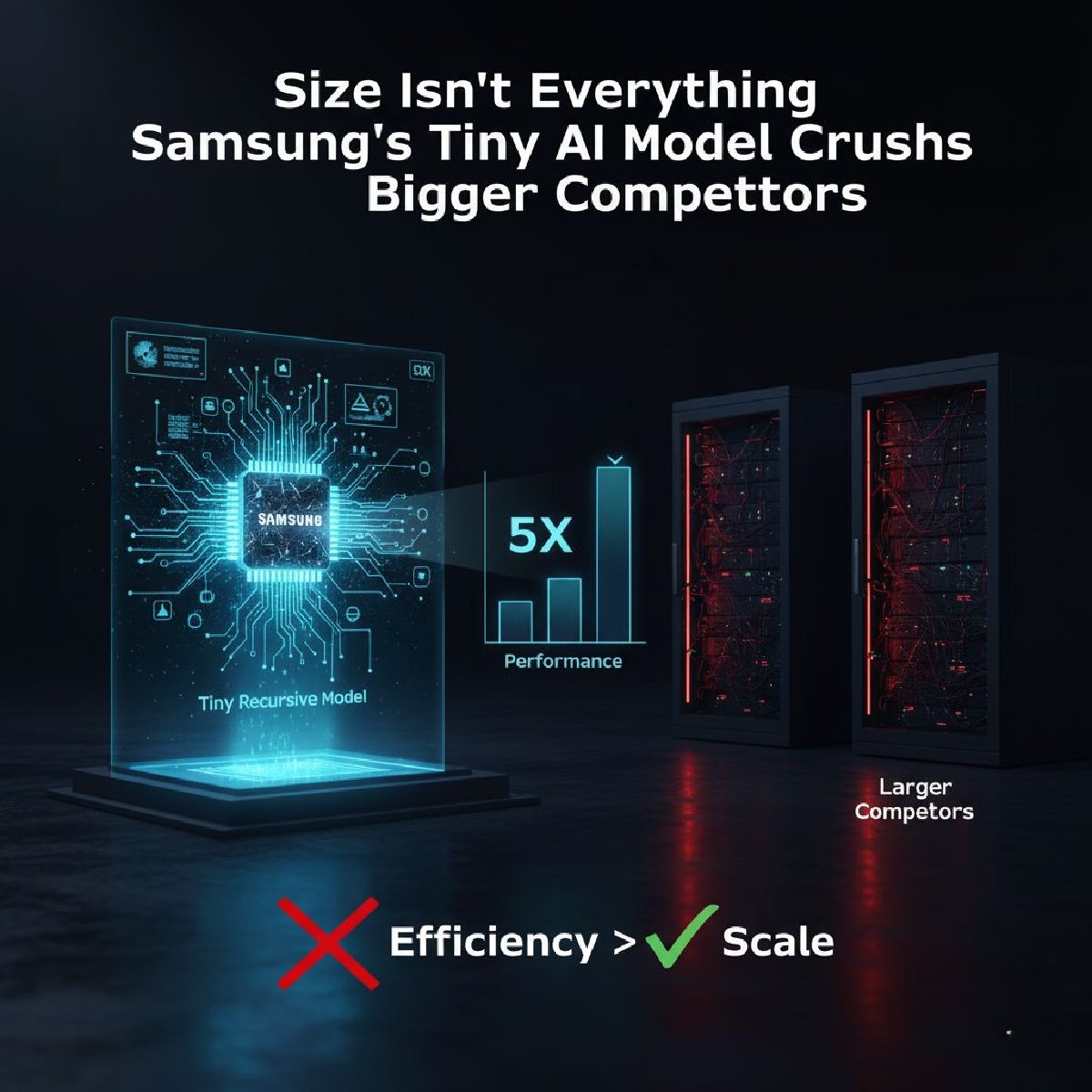Samsung just proved that in AI development, size isn’t everything. Their new Tiny Recursive Model outperformed significantly larger competitors in reasoning tasks, upending the assumption that bigger models always mean better results.
The model is small by modern AI standards, yet it demonstrates superior reasoning capabilities in benchmark tests against models with far more parameters. It achieves this through a recursive architecture that processes information more efficiently rather than just scaling up compute and data.
For developers and companies, this matters. Smaller models cost less to train, run faster on consumer hardware, and consume less energy. They’re more practical for real-world deployment, especially on mobile devices or in resource-constrained environments. If small models can match or exceed large ones, the entire economics of AI shifts.
Samsung’s breakthrough challenges the prevailing wisdom in AI research. For years, the industry has chased scale, building ever-larger models with billions of parameters. Companies have competed on who can train the biggest neural network, assuming that scale directly correlates with capability.
The Tiny Recursive Model suggests a different path: elegance over brute force, efficiency over sheer size. It’s a reminder that intelligence, whether artificial or biological, isn’t always about having more, it’s about using what you have more effectively.
The Wisdom of Constraints#
There’s a broader lesson here that extends beyond AI architecture. Our culture worships scale. Bigger companies, bigger datasets, bigger everything. We assume that more resources automatically produce better outcomes.
But constraints often breed innovation. When you can’t just throw more parameters at a problem, you’re forced to think differently. You find clever solutions instead of obvious ones. Samsung’s tiny model succeeded precisely because it couldn’t rely on brute force scaling.
Maybe true intelligence, in machines and in life, isn’t about accumulating more capacity. It’s about working within limits to discover what’s actually essential. The most profound insights often come not from having everything, but from understanding what really matters.


